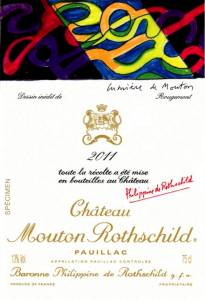The post Wines For The Worst Social Media Stereotypes appeared first on Incogvino.
]]>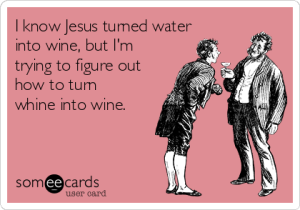
Whine into wine?
Or the more descriptive yet less catchy title: “The Best Wines To Pair With The Most Annoying Social Media Stereotypes“.
If you are even moderately active on any social media channel or platform, by definition, you will be engaging in a quasi-social manner with other humans. And we know that – as humans go – the spectrum ranges from amazing to annoying and everything inbetween. And as the world has gone mad for pairing wine with everything from moods to music, I present to you a useful guide to pairing everyone’s least favourite online stereotype with a wine to make it a bit more bearable.
The beauty of social media is the eclectic mix of individuals that make it up. That same attribute is also the root of the more annoying side. I often scroll through my Twitter or Facebook feed seeing the same predictable drivel from the same predictable people. Yes, of course you can unfollow or unfriend these tedious turds but even if you clear the offending individuals from your timeline, carbon copy replacements will pop up in time. So rather than spending inordinate amounts of time scrubbing my timeline, I have some wine to deal with the whining. I think some wines are particularly effective when dealing with specific types of bothersome bodies, so here is my definitive lists of wines to pair with all those eye-rolls:
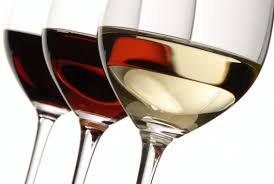
Wine makes everything better
- The Hashtag Harlots
Platform: Twitter / Instagram
Who are they? Characterized by promiscuous use of hashtags – hashtags everywhere – these are usually people who post to Instagram but also share directly to Twitter. Like mini SEO meltdowns, they’ll use hashtags for anything remotely related to what they’re posting as well as a few that have no bearing on the subject matter. E.g. “Yay, wine! #winewednesday #wine #merlot #riedel #alcie #OMG #vino #winecountry #WTF #BFF #crunked”
Wine: To cut through the dense thickness of the content matter, you will need a fresh, slightly acidic Sauvignon Blanc. Something to provide you with crisp relief when you’re suffocated by a flood of inane hashtags. - The Mommy Not-So-Bloggers
Platform: Facebook / Twitter
Who are they? Referring less to bloggers who actually produce helpful, often witty, content about the perils and pearls of motherhood and more to the meaningless moanings of the pregnant and the parental. By all means, share your precious moments on social media. That’s what it’s there for. We’re (mostly) all friends here. Just be mindful that if you’ve stripped your own identity of everything besides having produced offspring (i.e. when it’s all you ever talk about or everything you say is tied into it somehow), you can’t really get prickly when people accept that and only engage in terms of your maternal status.
Wine: Traditionally associated with maternal preferences, you’ll definitely want to avoid Chardonnay and rather go for something more exotic, but still spectacular and richly rewarding. My choice here would be a marvelous Roussanne or Semillon. While they’ll spend the foreseeable future exhausted and covered in child-manufactured fluids, you’ll still be footloose and infant free. - The TMI-ers
Platform: Facebook / Twitter
Who are they? Some people have messy lives. Drama. Intrigue. Like a 90’s soap opera. Most don’t, though. This doesn’t prevent a number of people from sharing their every tedious move in grotesque detail. It may involve a breakup. Or a bowel movement. You just never know. But you will be scarred for life.
Wine: This will likely be a heavy situation which will require a more serious wine. You’ll need to hit back with one of the big guns – a bold Cabernet Sauvignon with a near-sedative effect to assist your recovery. - The “Lifestyle” bleggers
Platform: Twitter
Who are they? My disdain for this lot is no real secret. “What’s that? You’re a lifestyle blogger? You were at the Ford Mustang launch? You drive a Chery QQ? Riiiiiight.” Everything is amazing, as long as it’s free and on the way to them. The princes/princesses of the press drop. You’ll find a lot more integrity in the structure of the wine you’re sipping while reading their latest rave review (not like they ever write any other type of review than “rave”, of course).
Wine: These call for something crisp, clear and contemporary to cut through the fog of BS – I’d go for an immaculate Cinsult or an honest Grenache. - The Candy Crush Saga inviters
Platform: Everywhere. They’re everywhere!!!!
There is no wine in the world that can help you deal with them. Only tequila. Or vodka. Preferably both.
The post Wines For The Worst Social Media Stereotypes appeared first on Incogvino.
]]>The post To Be (back) In The Pink appeared first on Incogvino.
]]>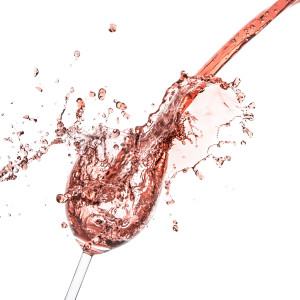
Rosé Rocks
For such a pretty, beautifully hued and generally cheerful-looking wine, rosé in South Africa has had a really strained relationship with consumers over the past decade or so. I’m not pointing fingers or laying blame but I suspect we’d all agree that this is largely due to two reasons: sugar and volume. I sincerely mean no offense to any producer but sugary sweet pink wines and pink wines in big boxes have – in the minds of many – set the tone for rosé consumption in SA. OBVIOUSLY not exclusively, but it’s a connotation that has been pretty dominant. Pair that perception with the idea that rosé is for girls, and you’ve essentially shoved your average rosé consumer into a pretty tightly defined box. Today though, I say to you, rejoice! For rosé is riding its own little wave of revolution – and we are all better off for it.
I may have mentioned previously my pained personal relationship with the rosy liquid; a definite case of “It’s not you, it’s me”. For years I avoided any and all wines which I even imagined had a hue of blush in it. This aversion was not because of anything wrong with rosé as such – not cultivar or style, not even sugar or bulk. It was all based on one week in 2006 where I was immersed in pink wine. As part of my honours degree, we completed a sensory training course at the Stellenbosch University Department of Food Science. The subject for that year was rosé wine. I spent a full week tasting, evaluating, studying, spitting, swirling and accidentally swallowing pink wine – from 8AM to 5PM. Five full days. The aim of the course was to teach us about the basic principles of sensory evaluation by training the group as a sensory panel. So we spent the days familiarising ourselves with the typical rosé characteristics, comparing each aroma and taste with the actual foodstuff, and then went into painfully detailed scoring processes. The wines were dead average. Dead boring. Dead awful.
I am not even moderately exaggerating when I tell you that for nearly 6 years I refused to even taste pink wines. At wine outings, I’d simply let the blush bottles pass me by. I wouldn’t even sniff it. I was traumatised. Academically the experience was fantastic. Practically, I was ruined.
Now, anyone who has ever read a word I’ve written has probably garnered that I pride myself on not being a judgmental wine drinker (or writer). Like everyone, I have my preferences, but I’ll try anything once and give all wines a fair chance to impress or inspire me. So when I ventured into the world of wine writing, I realised I could not be a credible wino if I ignore an entire style of wine. I reconciled with the pink monstrosity I’d so battled with for years and I can tell you now, I could not be happier.
Anyone who has paid a modicum of attention to what’s happening in your local wine shops will probably have noticed significant growth in contents of the pink shelves. Not only are there more rosé wines being produced, but styles are lighter, more Provençal and undoubtedly more delicious. SA has seen rosé consumption treble between 2007 and now – it is the fastest growing local wine category. And it’s not just here that the pinkies have been moving and shaking. Both USA and UK show double digit growth figures in the category and – shock! horror! – last year the richest of the rich in the New York Hamptons ran out of the precious pink nectar.
It’s a brilliant food wine (not sure if you should pair white or red with that meal? How about pink. Ding ding ding! We have a winner.). Pink MCC has also increased dramatically with winemakers exploring new styles and cultivars. And you know, the pink bubbles are often more expensive (even arguably, more delicious?) than their white counterparts.
Doubtless then that now is a terrific time to introduce SA’s first exclusive rosè wine competition. Conceptualised and brought to life by Clare Mack and her team at Spill Brand Communications, the Rosè Rocks competition was born. I was tickled pink (sorry…) to be invited to judge the competition. We were chaired by the brilliant Allan Mullins and the judging panel consisted of myself, Tinashe Nyamudoka (the head sommelier at The Test Kitchen), Neil Pendock, Malu Lambert (freelance food & wine journo) and Praisy Dlamini (winemaker at Zonnebloem). The judging went down yesterday and was completed as a blind tasting. All the results will be audited by Grant Thornton to ensure transparency and results the public can have confidence in.
We tasted around 160 odd entries and I was both impressed and slightly relieved to find that the majority of the entries were dry and off-dry. A relatively small amount of sweet pinks were entered. There were also a good amount of MCC entries (and what a treat it was to judge those). The winners will be announced at the awards ceremony on the 30th of September. As everything was tasted blind, not even the judges knows who came out tops. There will be a Top 10 announced for the still wines as well as one overall winner, and a Top 3 MCC wines and also one overall winner.
This may have been my first formal competition judging experience, but it was an excellent one. Scores were tallied, results discussed and the top wines were re-tasted to ensure that a deserving winner was picked. I’m counting the days until the embargo lifts and I can quiz the organizers about the identities of my personal favourite picks, because I will definitely be stocking up.
Most importantly, the interest in this competition has been immense, boding well for a summer of superb rosè sales and consumption alike. If you are someone who (like I was) simply does not rate rosè, I urge you to take a fresh look at what’s happening in this category. In fact, I will struggle to take you seriously as a wine drinker if you don’t at least try. And the idea that pink wines are for ladies is so last year. I’d refer you to the brosè movement and tell you that real men can pull off drinking pink drinks.
I’ll be spending my summer sipping away on some cool rosè, feeling pretty pleased to be back in the pink.
The post To Be (back) In The Pink appeared first on Incogvino.
]]>The post King Cab – The Christian Eedes #CabReport2015 appeared first on Incogvino.
]]>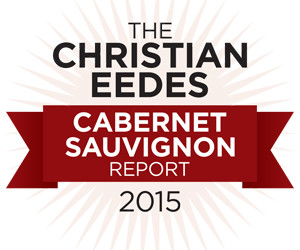
2015 Cabernet Sauvignon Report
It’s often said that Cab is King in Stellenbosch, and that the area is generally considered “Cabernet Country”. I’ve heard winemakers and others in industry mumble the sentiment that if you can’t make a decent Cabernet Sauvignon in Stellenbosch, you have no business being a winemaker. Perhaps a harsh sentiment, but it rings true in many ways. South African wine is going in many different and exciting directions, but perhaps we must be wary of spreading ourselves too thin in a cultivar sense? Of course diversifying and experimenting is great in terms of new offerings and discovering what is possible (and equally, what is not) but there is also no sense in moving rapidly away from our strengths – of which Cabernet Sauvignon is definitely one. The annual Christian Eedes Cabernet Sauvignon Report take a good look at what’s potting with local Cab, and this year continued the showcasing of the top specimens.
The #CabReport2015 was revealed during a casual ceremony at Burrata on Wednesday afternoon. Christian kicked off the proceedings with an introduction and thanked Derek Prout-Jones (thereafter referred to as DPJ) for sponsoring the 2015 report. He went on to explain that for the 2015 report, they moved away from the 20-point/5 star rating system and used the (internationally more standard) 100-point system. They also did away with the Top 10 and instead awarded all wines scoring 90 points and higher a certificate.
DPJ also shared a few thoughts with those gathered. He underlined the importance of the Cab Report, mostly in terms of what it does to raise consumer awareness and – as a result – drive sales, ultimately expanding the wine-drinking footprint. This is specifically important for the cultivar as it’s arguably one of SA’s most important – some would claim it’s our most iconic grape.
The approach to the report as follows (quoted directly from the report):
“The tasting is capped at 60 wines, partly consisting of examples which have fared well in recent local or international competition and partly from those producers I consider to be the best in their field even if somewhat low profile. While other bigger tastings can have a useful talent spotting function, the intention here is very much to do good by what might be called the seeded players, the finite line-up in particular intended to avoid the perils of palate fatigue. The judging panel was chaired by myself – Christian Eedes – and further consisted of two trusted colleagues, namely Roland Peens and James Pietersen, both of Wine Cellar, a Cape Town firm which brokers and cellars fine wine. We tasted blind, scoring done according to the 100-point system.”
If Cabernet is your game, you will want to take note of this report. And to see the consistency with which many of these producers perform, a gander at the report of the previous 3 years illustrates their continuously excellent performance brilliantly – names like Le Riche, Graham Beck, Warwick, de Trafford and Spier (to name but a few) keep popping up in and around the Top 10 and scored 90+ in the 2015 report. It’s a safe assumption to make that these are the winemakers and estates leading the way to top SA Cabernet. If you’re serious about Cab Sauv, do yourself a favour and page through all the reports to spot the trends and have a squizz of where your favourites rank. All previous years’ reports are available on the WineMag.co.za site.
A special treat was having all the 90+ pointers available for tasting. My favourites – in no particular order – were the Vergelegen V 2011 (unreleased) which is still preposterously young but will shape to be a fantastic number in years to come, the de Trafford 2012 which seemed to me the most elegant and beautiful wine of them all and the Warwick Blue Lady 2012. Warwick also went one step further and had a 1991 Cabernet Sauvignon to taste alongside the Blue Lady. It was exquisite, aged beautifully but with enough life in her to go a few more years yet.
You can read the full 2015 report here. Congratulations to Christian on his valuable contribution. While no single report or document is likely to ever be considered comprehensive (for a given value of comprehensive) by everyone who reads it, the fact that we have these inputs available to the public goes a long way to building and promoting wine in general.
The post King Cab – The Christian Eedes #CabReport2015 appeared first on Incogvino.
]]>The post Sediment – Wyn op die Kassie appeared first on Incogvino.
]]>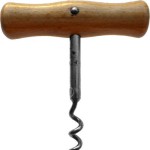
Sediment. Vrydae 17:30 op Kanaal 144
Tydens Desember 2014 het ek op Twitter kennis gemaak met die @SedimentTV rekening wat voorbrand gemaak het vir ‘n Afrikaanse KykNet reeks wat handel oor die plaaslike wyn wêreld. Op Vrydag 2 Januarie 2015 om 17:30 het die eerste episode die lug gesien, met ‘n gemengde ontvangs van die industrie af. Enige interessante nuuthede (veral dié wat ‘n bietjie omstredenheid veroorsaak) verdien om van naderby ondersoek te word. Daar is reeds drie episodes uitgesaai en Episode 4 wys vanaand. Incogvino het die PVR hierdie week laat les opsê en al drie episodes bestudeer, en ek is reg om my beskeie uitspraak te lewer.
Die debuut episode het ‘n redelike mengsel van kommentaar op sosiale media ontlok; van uitermatige hoë lofprysing tot ‘n paar bitsige aanmerkings, sommige blykbaar meer gefokus op die aanbieder en die produksiespan as die inhoud self. Dit verras my glad nie. Sommige mense lewer altyd hul opinies as blindelingse lofsangers en ander het maar net ‘n skerp tong. Daarom het ek eers besluit om nog ‘n paar episodes te beloer voordat ek my R0.02 ook in die pot gooi.
Ek moet bieg, ek het maar gesukkel met die eerste episode. Die bewerige kameraman het my na my Stiguron laat gryp om die seesiek gevoel af te weer. En ek het by tye gewonder of hulle betaal word vir elke keer wat die skoot verander: 5 sekondes op die wynmaker, 2 sekondes op ‘n uit-fokus wynglas, terug op die wynmaker vir 3 sekondes, dan 2 sekondes op die bottel en so aan, en so voort. Ook maar goed ek het gesit en kyk want ek het begin duiselig voel. Ek besef ek is nou baie krities oor aspekte van die televisiebedryf waarmee ek nie bekend is nie (my gebrek aan terminologie in die opsig verklik dit reeds) maar vir my as kyker was dit te opvallend. Dit daar gelaat, die kamerawerk het myns insiens baie verbeter in die derde episode, ‘n tendens wat ek hoop om deur die res van die reeks te sien.
JP Quickelberge as aanbieder het ook my opinie verdeel. Hy’s jonk, vriendelik en kom baie gemaklik voor: ‘n vars gesig uit die wynbedryf. Die toon van die reeks is ontspanne en sy interaksie met die wynmakers en almal wat op die program verskyn is informeel; minder soos ‘n onderhoud en meer net ‘n lekker gesprek. Sy dikwels gemaklike ‘ad-lib’ styl laat hom soms amper in die steek wanneer hy effens minder voorbereid voorkom. Ek verstaan dat om die insetsel 27 keer oor te skiet om die dialoog 100% te kry sal beslis die natuurlike gevoel van die gesprek heeltemal vernietig, maar in veral die eerste episode kon die aanbieding miskien ‘n bietjie meer afgerond gewees het.
Maar ek is nie net hier om krities te wees nie. Ek het nie KykNet genader met ‘n idee vir ‘n wyn program nie, ek het niemand oortuig dat ek ‘n goeie aanbieder vir so iets sal wees nie en ek is beslis nie op die kassie om te gesels oor wyn nie. Die konsep is fantasties en presies wat Suid-Afrika benodig om die wyn boodskap na sy mense te bring: wyn vir die massas in die gemak van hul sitkamer. Ek verneem die plase het betaal om deel te neem aan die program en ek is nie bekend met hoe die proses verloop het nie maar ek is verheug om te sien dat die fokus weg is van die tradisionele “groot”, meer kommersiële plase en meer op kleiner, boetiek landgoedere. Die plekke besoek tot en met Episode 3 sluit in Black Elephant Vintners, Môreson (terloops ook een van die Incogvino lede), Rickety Bridge, Clos Malverne, Middelvlei, Marianne, Klawer, Lutzville en Fryer’s Cove. JP en die span snuffel die stories agter die wyn uit, gesels met die wynmakers en meng ‘n goeie dosis wynkennis by, veral met die gebruik van die “Wynfeit” oomblikke (die visuele aanduiding van die wynfeite – ‘n klein logo wat op die skerm verskyn wanneer JP ‘n wynfeit uitlig – is afwesig in die eerste twee episodes maar duik dan op in episode 3. ‘n Klein redegerings foutjie miskien?) en geselsies met die wynmakers, nie net in die proelokale of kelders nie maar ook in die wingerd.
My grootste teleurstelling is dat daar nie meer gemaak word van die saamproe aspek van die program nie. Deel van die Sediment aanbieding is die geleentheid vir kykers om by die Wyn Klub aan te sluit en elke week 6 bottels van die wyne wat in daardie week se episode geproe word, te ontvang. By elke plaas wat besoek word, word een van die wyne in die pak geproe. Ten spyte van al die moeite wat met die wyn klub gedoen word, is dit baie maklik om die proe deel tydens die episode heeltemal te mis. ‘n Vinnige bekendstelling of visuele aankondiging van die saamproe sou nie te versmaaie gewees het nie. Hulle mis ook uit op ‘n reuse geleentheid om tydens die episode met die wyn klub lede op Twitter ‘n bietjie interaksie te skep, veral om die wyne wat geproe word. Hier by Incogvino weet ons darem al ‘n ding of twee van Twitter wynproeë. *kug*
Ek sluit af: dis ‘n uitstekende konsep. Ek haal my hoed af vir JP en almal wat dit uitgedink en deurgevoer het. Dit is hoogtyd dat die wynindustrie sien wat die jonger garde kan bemag en hoe gedrewe ons is om ons liefde vir wyn met die wêreld te deel. Nietemin, soms laat die vervaardiging en afronding die inhoud in die steek. Tog, soos ek opgelet het, blyk dit dat elke episode ‘n verbetering op die vorige een is en dit maak my hartjie bly. Ek gaan aanhou kyk, die PVR is gestel vir elke episode ingeval ek iets mis. Dit is beslis ‘n eerste vir SA televisie en vir die wyn industrie, en hopelik is dit ook nie ‘n laaste nie.
Sediment. Vrydae om 17:30 op KykNet, Kanaal 144
The post Sediment – Wyn op die Kassie appeared first on Incogvino.
]]>The post A Very Incogvino Year appeared first on Incogvino.
]]>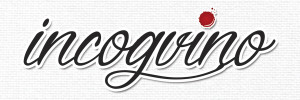
“Without being known for predictable tastes and opinions”
I’m not one for New Year’s resolutions and retrospectives. I used to be, when I was younger, but then I realised how bad I am at sticking to my lofty ambitions of bettering myself. So I stopped bothering. I pondered this post for a while. The idea was to write an end-of-year post before 31 December 2014. That never happened, partly because of my professional level of procrastination and partly because internet connectivity in Stilbaai was practically non-existent this year. Then I wondered if writing a 2014/2015 New Year’s post wasn’t going to be utterly boring and predictable; was I going to write one just because EVERYONE is writing one? Do I really have something to say, or would I just be rehashing the year and end up sounding hopelessly beige?
2014 was quite a year, both personally and professionally. Despite all the ups and downs, I had a big idea for 2014: Incogvino (you can read about how it all got started here, I won’t re-tell the story now). With some help from talented friends and by joining up with Andy Hadfield, we breathed life into a domain I had registered on a whim years earlier. It was a place where I could write freely on my favourite hobby: wine. The essence of Incogvino has been and will continue to be spreading word on all things wine: that wine is fun; that wine doesn’t have to be smothered in pompousness and snobbery.
Most importantly, I wanted to drive home the idea that wine is for everyone and anyone. We Are Incogvino. An unassuming character. With oft unassuming tastes. Sure, boxed wine isn’t for everyone. But then neither is Châteauneuf-du-Pape. Why should anyone be shamed for what they drink? To each their own, live and let drink etc. etc. Just because I don’t drink katembas doesn’t mean somebody else can’t.
2014 was a good year for Incogvino. From our first post in April, we’ve managed to drink some fabulous wines, visit some amazing wine farms, send our SuperFANS to some exciting events, give away some free things and continue the tremendous Twitter tastings.
None of this would have been possible without our incredibly impressive member farms: Warwick & Vilafonté, Haut Espoir, Beau Joubert, Lithos and Môreson. The concept of the Incogvino Twitter tastings (as begun by Real Time Wine) just took off this year. We had massively successful, fun and exciting tastings with Lithos, Haut Espoir, Beau Joubert and Vilafonté – the latter taking it to the next level with an interactive tasting seeing Mike, Sophia and co. setting up a webcam and leading the tasting via live stream. Tastings had 20 to 30 people from all over SA joining at any one time. Dinner parties were set up, menus planned and prepared to pair with the wines, restaurant bookings made and tweets and photos flying everywhere. That’s a far cry from the five or six app users that used to gather fleetingly – and without much ceremony – to sip two or three wines and send three or four tweets about them.
So that’s it for the look back. Now I have to look ahead to 2015. And to be truthful, I don’t know what to expect. I have plans and ideas. I have a small but capable army of immensely talented people who are backing Incogvino. I want to grow this little passion project and I want to see it turn the wine industry, or at least the writing/blogging part of it, on its head. Ok, maybe that’s me tilting at windmills. But I want to try.
I want to shake things up. I want to do more. Say more. Write more. More wines. More farms. More of the usual fun stuff. More events. More hidden gems. More giveaways. More people. But also more opinions. More on the things I disagree with. More on the things that are controversial. More on the things that really grate my proverbial cheese (or crush my proverbial grapes?). And learning. Lots of learning. Wine is magic; I don’t think anyone can ever really know ALL the secrets. But we can give it a damn good try.
Pop those corks, lovelies. Decant and let breathe. Polish the glasses. And hang on to your Panama hats.
The post A Very Incogvino Year appeared first on Incogvino.
]]>The post Crystal Clear: Wine & Wine Glasses appeared first on Incogvino.
]]>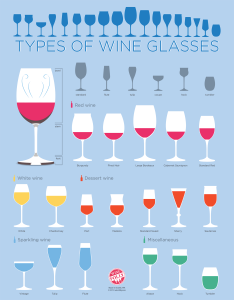
An Infographic illustrating types of wine glasses (via http://winefolly.com/tutorial/types-of-wine-glasses/)
A simple Google search will produce a mountain of results describing types of wine glasses, categorised for white wine, red wine, dessert wine, sparkling wine and others. The above infographic is a great little at-a-glance summary. So, why all the different shapes? And why match them with specific types of wine? Hard, irrefutable scientific evidence is scarce and flaky at best on this topic, but we’re pretty much OK with that. Science is great but in the end it comes down to your experience and not a study in some obscure journal. One fact that seems obvious and logical is the effect of the stem on the glass. Stemware allows the drinker to hold the glass without touching the bowl and increasing the wine temperature.
The general theory seems to be that the shape of the glass affects how the aromas from the wine reach your nose, thereby impacting how you experience the wine. Red wine glasses have a bigger bowl, which is thought to assist oxidation and opening up the wine. White wine glasses are comparatively smaller, as preventing rapid oxidation can help preserve a fresher flavour of delicate whites.
Dessert wines are served in small glasses. They generally have a very high alcohol content, so smaller serving glasses are desired but it may also be that the small glass directs the liquid further back onto the tongue, lessening the burning effect of the alcohol and increasing the perception of the sweetness.
For champagne glasses the popular choices are the flute or the coupe. The coupe is not as fashionable as it was a few decades ago but is still available. It was especially suited to build champagne towers as they shape allowed the flowing of the bubbly from the top, single glass into all the other in a rather spectacular fountain. The story goes that the original coupe design was shaped on the breast of Marie Antoinette, Madame de Pompadour or a number of other French aristocratic ladies of the time. While this is probably more fantasy than fact, tis a fabulous little tidbit.
The problem with the coupe is that the bubbly loses carbonation quite quickly because of the large surface area. The flute is seen as more elegant and sophisticated nowadays and is much preferred to the coupe. The narrow bowl also retains the carbonation more effectively, keeping your bubbly bubbling for longer and keeping bubbly lovers delighted.
But what about lead crystal vs. glass? Crystal is glass with lead monoxide added to it. This increases the refractory index of the glass. Simply put, it makes it more shiny and sparkly. Lead-free glassware is enhanced by the addition of alternative to lead monoxide, such as zinc- or magnesium oxide.
So where does that leave us in the great glassware debate?
With modern technology improving glassmaking techniques and modern trends affecting our tastes and designs, the choice of glassware available to wine drinkers today is expansive. Coloured glass, etched, embellished, stemless, oddly shaped or classic styles. You can buy them in boxes of 12 for a steal at your local shop or you can import them at eye-watering prices from the best glassware manufacturers in the world. But does it make a difference? That’s probably up to you. Sommeliers, Masters of Wine and other learned wine fundis are likely to insist it makes all the difference. If your nose isn’t quite as sensitive as theirs or your palate as particular, chances are the type of glass you use won’t affect your experience that much, if at all.
So try before you buy, see which you prefer and make sure they’re always filled with good wine.
The post Crystal Clear: Wine & Wine Glasses appeared first on Incogvino.
]]>The post Alcohol advertising from a wine label’s perspective {Guest Post} appeared first on Incogvino.
]]>The colourful serpentine lines of the French painter and sculptor, Guy de Rougemont, has become the latest commissioned artwork to adorn the label of Chȃteau Mouton Rothschild’s 2011 Pauillac first growth.
Philippe de Rothschild has been ambitiously marketing his wines by enlisting important artists to create original designs for his wine labels, to enhance the marketing ability of his wines, since the 1920’s. Some of the well known artists include Andy Warhol, Pablo Picasso, Salvador Dali, Georges Braque, Francis Bacon, Juan Miró and Lucien Freud. This was of such importance and value to him that he brought out a completely blank label in 1993 in protest against the USA’s refusal to distribute his wines sporting the artwork by French painter, Balthus Klossowski, consisting of a line drawing of a nude woman. And as confirmation of the advertising power of this “mobile billboard” better known as the wine label, this curious situation caught the attention of wine consumers and collectors globally, resulting in enormous profits for Mouton Rothschild. (However, a rock solid history of exceptional wines obviously also helps.)
But, notwithstanding the marketing value of any wine label, it also primarily distinguishes a winemaker’s products from the products of other producers and competitors. Because the character and quality of a wine are not only determined by its varietal, but also directly by the climate, soil and location (terroir) it grows in and viticulture practices of the farmer, it is of utter importance that the origin of the grapes is indicated on the wine label to enable the consumer to make a befitting choice or to ensure that the consumer locates the correct or desired wine. In South Africa such an origin control system has been in place for years. Only if 100% of the grapes, from which the wine was made, come from the same demarcated area, may the label use the abbreviation W.O. or Wine of Origin, followed by the name of the specific production area such as Stellenbosch or Robertson.
Wine labels also serve as visual communicators, educating consumers regarding the wine’s history and heritage such as the quirky Boer & Brit labels designed by the Fanakalo team, Jan Solms and Rohan Etsebeth.
In a 2011 study, conducted by Wine Intelligence, they found that a wine label is one of the most powerful ways to influence consumer perceptions of a wine. It is almost as if the beauty of the label, serving as the final finesse on any bottle, reflects the divinity of the wine inside the bottle. During a two-day forum held in Amsterdam, discussing so called “neuro marketing”, they further found that consumers of luxury goods, such as wine, are particularly influenced by pleasant colour combinations, thoughtful designs touches and a clear brand image recommending that producers and retailers, dealing with such goods, need to envelop the consumer in a complete sensory experience of the brand. An experience completely suited to the needs of a typical wine consumer, considering the importance aspects such as aroma, taste and ambience of a tasting room have on their decision to buy a wine, which experience can ultimately be summed up or revisited on the wine’s label.
The ban on alcohol advertising, proposed by the recently approved Control of Marketing of Alcoholic Beverages Bill, as well as the ominous threat of possible plain packaging regulations, similar to those contained in Australia’s Tobacco Plain Packaging Act 148 of 2011, from a wine label’s perspective, is clearly of great concern. Although very little is known about the details contained in the said Bill, it is foreseen that the culmination of the aforementioned will seriously restrict a wine consumers’ freedom of choice and also prohibit them from distinguishing wines from various demarcated regions, ultimately preventing consumers from choosing their wine of preference form a desired region. This will also leave wine producers in the dark, as wine consumers’ choices will no longer be able to guide them in consumers’ preferences and leave producers unable to profitably cater for consumers’ demands. Unable to choose a wine for its finely crafted content, consumers might fall into a habit of bargain driven buying which will have a tremendous negative financial effect on an industry already under severe economic pressure which might lead to even more exports, depriving locals of one of our country’s best home grown and produced products.
Health Minister Aaron Motsoaledi, motivates the Control of Marketing of Alcoholic Beverages Bill by saying that alcohol has been found to be a major contributing factor in the majority of motor vehicle accidents and that it has also been linked to crime and violence in South Africa. Subsequently he feels himself obliged to protect the consumers of alcohol from their self inflicted bad habits by creating a “nanny state” in which the consumer’s freedom of choice is regulated to the point of extinction. Deputy Health Minister Gwen Ramokgopa wants to extend this protection by revising the regulations for labelling of alcoholic beverages to include health warnings. Considering the ministers’ stance against alcohol and tobacco products, and the parallels often drawn between these types of products, in view of the global developments in respect of plain packaging regulations for tobacco products, it might only be a question of time before similar regulations might be imposed on packaging of alcohol products, which includes wine labels. Having touched on the parallels between alcohol and tobacco, it must be stressed that the most effective anti-smoking initiatives have been multi faceted. Similarly, the problems with alcohol abuse are complex and often alcohol abuse is a mere symptom of a much larger socio-economic illness.
In a British study evaluating the impact of picture health warnings on cigarette packets the researchers concluded that:
“There were few changes post implementation of the picture health warnings in the number of health effects recalled or participant’s perception of risk…There were no differences post implementation of the picture health warnings in the number of smokers reporting forgoing a cigarette when about to smoke one or stubbing our a cigarette because they thought about the health risk of smoking…Among young people, the impact of picture health warnings was negligible.”
Considering the mentioned “neuro marketing” element in advertising of luxury goods, such as wine, it seems that the banning of any advertising in respect of these goods might only have an effect on the educated consumer who is looking for a specific product, while such banning might have no effect at all on the bargain driven consumer, who (it seems) is also the consumer most likely to overindulge.
In principle it is unfair to judge cigarettes and wine on the same basis. Cigarettes are the only products, if used as intended by the manufacturer, that are likely to kill you, whilst wine have a wide range of proven health benefits if used moderately.
It is absurd to think that people can be legislated into responsibly consuming alcoholic beverages. Notwithstanding the State’s good intentions, it can never replace a parent’s role in educating a person into responsibility. The negative impact such legislation will have on the liquor industry, its economy, sponsorships for sport events, intellectual property rights and employment far outweighs the remote possibility it might have in combating motor vehicle accidents, criminal activity and domestic violence on its own. A balance must be struck between state protection and a consumer’s right to sovereign choice.
In context of a wine label, the intended legislation put so much more at risk than the mere advertising of an alcoholic beverage. Blind legislation in this regard might also deprive us of the valuable trademarks, proud heritage, rich history, unique terroir, colourful stories and precious art depicted on and represented by wine labels.
The post Alcohol advertising from a wine label’s perspective {Guest Post} appeared first on Incogvino.
]]>The post Veritas Young Wine Writer Award 2013 appeared first on Incogvino.
]]>
Turns out someone rather liked my scribblings and I was chosen as the winner. This wildly unexpected turn of events lead me to pursue the idea of Incogvino, my own little platform on the interwebs where I can write about wine. Which is all I really want to do, really. There will be a bit more on how this website came to be in a future post. For now, you can read my original entries (written in Afrikaans) here. After a number of requests, I translated my entries to English. You can read that below.
Quaffers and their counterparts
Wine. Making it, selling it and enjoying it is a fluid and ever-changing world. A world that is becoming increasingly diverse, inhabited by all kinds of people. From students enjoying little boxes of wine in pubs to true connoisseur who attend auctions and travel to all corners of the earth for new oenological discoveries. The spectrum in between is vast, surprising and never boring.
As diverse as the people who worship at the feet of Bacchus may be, the precious liquid that they all enjoy is what brings them together. Countries and regions. Styles, colours and tastes. Cheap as chips or eye-wateringly expensive. A lifetime can be dedicated to the knowledge that comes with a passion for wine. Some do just that. Sommeliers. Winemasters. The rest of us do what we can, learn what we can, decide what we like and what we don’t care for.
Often, two types of wine are distinguished. Quaffers and wines that were made to pair with food. The former created for easy drinking and the latter demanding to be carefully combined with just the right flavours.
Quaffers are everyday wines for everyday enjoyment. Simple. Without pretense. Your glass of sweet relief after a long day at the office. The start of the weekend. A holiday staple. Quaffers are easy to drink. They don’t make you think too much about what’s happening on the palate. The vintage is not important. Ageing potential is irrelevant, because the bottle won’t see next week. Quaffers also won’t really break the bank. Soft red blends, a fresh Sauvignon Blanc, a lovely Merlot that wipes out a long, difficult day.
At the other end of the spectrum are the quaffers’ counterparts. Fine dining wines. Table wines that were made for haute cuisine, special dishes or specific flavour combinations. These wines need something to complete them, challenge them and bring out the best in them. They speak to you. They tell you what should be on the plate, what they need and what they’ll work with. They demand planning and careful, considered choices. A little time and a bit of effort is necessary to ensure that the wines and the feast are perfect a perfect match.
And yet, while these two types of wine seem so vastly different, they have more in common than you may think. It may be more challenging for a serious, fine dining wine to pass itself off as a quaffer, but there’s no reason the latter can’t take a well-deserved place at the table.
Antiquated notions about wine and pairings expect red wine to be paired with red meat and chicken to be paired with white. These ideas are being replaced with new, exciting and adventurous combinations. Heavy reds are no longer solely destined for big, juicy steaks. How about a Pinot Noir with that tuna steak? Or some luxurious, rich Chardonnay to go with the oxtail curry?
The emphasis is shifting to balance of flavours between the wine and the dish. Pair the main characteristic of the wine with that of the food, rather than trying to match the wine as a whole with the entire dish. Of course a few golden rules will ensure a successful pairing, but the hard and fast “rules” of pairings are falling away in favour of a fresh, new approach. A good approach is to focus on the wine and match the food to it. As long as the wine is sweeter than a sweet dish, or more acidic than a zesty one. And try to avoid bitter-bitter combinations.
Ultimately, the best way to find the perfect match is through trial and error. Experiment with unusual combinations, contrasting flavours and those that are complementary. Food and wine were made for each other and complete each other.
In South Africa, quaffers and their counterparts are often found in the same price class. Local producers fill the market with high quality, premium-class wines at affordable prices. Wines are made in many different styles, sometimes classic, sometimes new-world and sometimes according to their own initiative. These wines are comfortable at any table, with or without a fancy menu. They make finding the perfect pairings even easier, and considerably more budget friendly.
The supposed rules around drinking wine are slowly changing and disappearing. Wine is more affordable, drinkable and accessible than ever before. The line between quaffers and fine table wines is fading. Producers and winemakers are making their own rules, as they see fit. The end result? Creating wines that can be enjoyed whenever, wherever and however you please.
Joostenberg Long & Late
(My short blog post on the most unusual wine I’ve ever tasted)
When in search of an unusual wine or wine type, people often chase after them in the farthest reaches of the planet. French Bordeaux, Argentinian Malbec or German Riesling. Sometimes you look so far afield that you end up missing the gem that was right under your nose.
I discovered such a gem in a small bottle with a content resembling that of a brandy. No label. Just a name, written in Tip-Ex. Joostenberg Long & Late.
“A rarity,” I was assured.
“Uniquely dry-sweet,” I was told.
“Perfect cheeseboard wine,” was the advice I was given.
And it was exactly that. All of that and more.
My dad used to buy Hanepoot sweet wine, in those big bottles with the little ear on. A light straw-colour. He has a small, old wine barrel in the kitchen. Just a few liters. The sweet wine would be put in the little barrel. And it would be left there. Until we’d almost forgotten about it. Then one day, a year later, as winter creeps around, the barrel will be opened. Sweet, syrupy goodness would come out, almost the colour of Port. My mom’s favourite.
The Joostenberg Long & Late is nothing like my dad’s little creation. But the story behind it reminds me of it. It’s an experimental wine, a single barrel of 2004 Chenin Blanc. Harvested late, fermented in the barrel for 3 months and then just left for 8 years.
The winemaker isn’t entirely sure what to make of it either. The closest description is a Vin Jaune-style wine. Strong sherry character, but it isn’t fortified. Lots of sugar, but the sweetness is masked by something that dances around the edge of your consciousness, but you can’t quite put your finger on it. An earthy, nutty taste that just barely eludes you.
It’s a damn shame it was such a small bottle.
The post Veritas Young Wine Writer Award 2013 appeared first on Incogvino.
]]>
